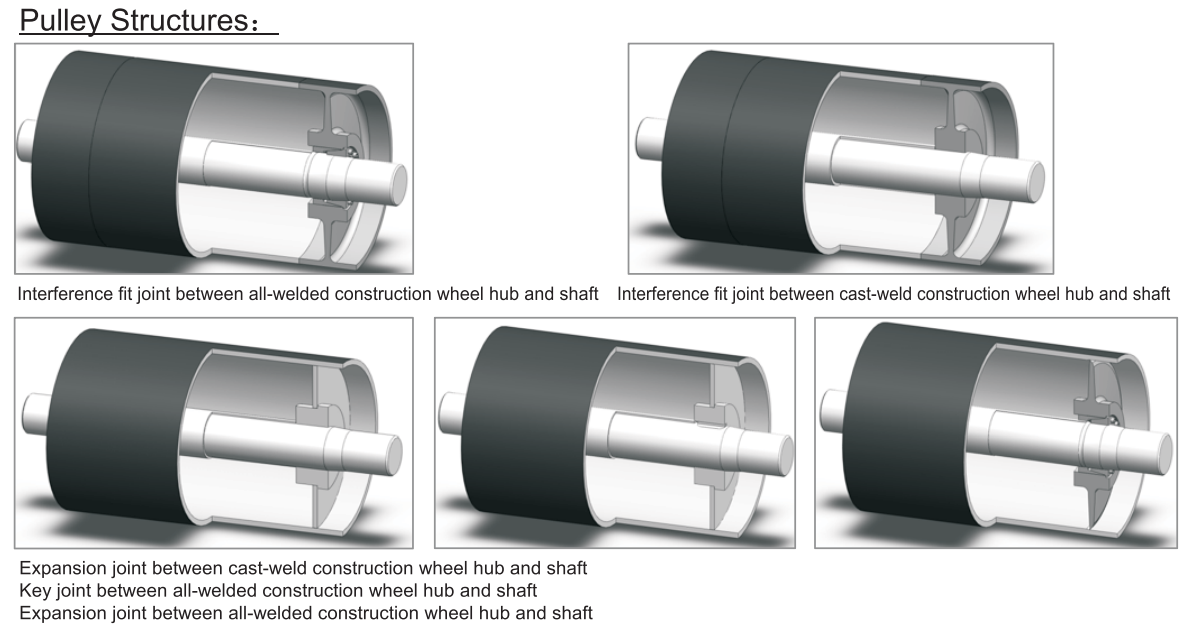GCS conveyor idler rollers are customized by national and bandwidth standards and customers' required dimensions. The main design and process are produced by international standards and the quality is mainly checked by shaft extraction and tempering, ultrasonic flaw detection of the weld seam, rubber material and hardness, dynamic balance testing, etc. to ensure a longer product life.
The belt conveyor drum pulleys can be divided into the following categories depending on the placement and functional role.
Head pulleys
The head pulley is located at the discharge point of the conveyor. It usually drives the conveyor and is usually larger in diameter than the other rollers. For better traction, the head pulley usually has hysteresis (using rubber or ceramic hysteresis material).
Tail and wing pulleys
The tail pulley is located at the loaded material end of the belt. It has a flat surface or a slatted profile (wing wheel) which allows the material to fall between the supporting parts and by doing so cleans the belt.
Snub pulleys
The rollers change the direction and route of the material transport by increasing the belt wrap angle and improving the traction of the drive wheels.
Drive pulleys
The drive pulley, which can also be a head drum, is driven by an electric motor and power transmission unit and propels the belt and material to the discharge opening.
Bend pulleys
The bend pulley is used to change the direction of the belt and can be placed in any position where a change of direction is required.
Take-up pulleys
Take-up pulleys are used to provide the right tension on the belt, to ensure that the surface of the belt remains flat and that the route is stable. Its position can also be adjusted.
The pulleys are mainly constructed as follows
|
1 |
Barrel skin |
|
2 |
Cylinder skin with cast rubber |
|
3 |
Ceramic-covered cylinder skin |
|
4 |
shaft |
|
5 |
Joint plate |
|
6 |
Bearing |
|
7 |
Bearing housing |
|
8 |
Roller balance inspection |
|
9 |
Flaw inspection |
|
10 |
Stress relief |
|
11 |
Radial run-out values |
| 12 |
Service life |
Our rollers are commonly used in the mining industry, thermal power plants, metallurgical industry, building materials industry, port terminals, cement industry and quarry terminals, GCS roller conveyor manufacturers can customize rollers of different sizes, quality, and standards according to the requirements of different customers. To start your new project, feel free to contact the GCS professional engineering design team.
GCS reserves the right to change dimensions and critical data at any time without any notice. Customers must ensure that they receive certified drawings from GCS prior to finalizing design details.
Post time: Jun-10-2022





